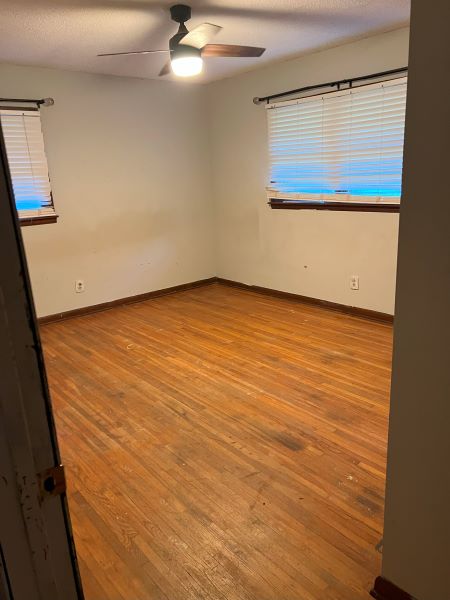
One of the most difficult aspects of starting your own business is figuring out pricing — heck this is even tough when you’re an established solopreneur looking to increase your rates. You want to get paid, but you also need some experience under your belt, so you may be willing to charge less than you ideally want.
On one hand, I think everyone needs to pay their dues and work their way up. It’s rare that you can come out of the gate commanding such high prices — after all, a lot of business is about supply and demand.
However, I think starting out working for low wages can make it that much harder to work your way up the price ladder. For example, it’s tough to up your rates 100{6fac3e6a3582a964f494389deded51e5db8d7156c3a7415ff659d1ae7a1be33e} or more after getting enough experience under your belt and getting good references.
Making Less Than Minimum Wage
I remember the first time someone contacted me about writing an article for $25. I was thrilled and felt like I had made it. Get paid to write? It seemed like a dream. I figured I could probably write a post in an hour, which would be a decent hourly rate.
But I was wrong. In those early days, it took me several hours to write a basic blog post. I was still fraught with fear and between coming up with topic ideas, writing the outline, editing, and formatting the articles, everything took much longer than anticipated.
At that rate, I was lucky if I was making minimum wage. Of course, I’ve gotten better over time, but I seriously question if some of that early work was worth it, but a lot of it was my own growing pains.
Several months ago, I did a few things to help bolster my income and get out of the beginner’s pay bracket. I finally started to value my work (and myself) and have begun charging clients based on that value.
Here’s how to charge what you’re worth and the steps to take to boost your income.
Be Confident to Charge More
I’m grateful that I had work, but as time went on and I got better at my craft, I felt like I was trapped on the low-end of the pay scale — something I’ve been struggling with in my new business, yet familiar territory, given my nonprofit past.
I looked at my peers making far more money than me and wondered what I was doing wrong? I knew it wasn’t necessarily about talent or ambition, but a confidence to charge more.
You only get what you ask for, right? My breaking point was when I felt stunted by my lack of income growth. I compared my old salary at my job of $2,500 per month and did some math. If I worked at $25 per post, I’d have to write 100 articles per month — or 25 articles per week, or 3+ articles a day, each and every day to make the same amount of money.
Even though I’m a personal finance nerd, I had never actually sat down to do the math. Once I saw the numbers, I was in shock. I knew that my business was not sustainable — not on a creative, professional, or personal level.
Ask Clients About Their Budget
I’ve mentioned this before, but I completely flipped the switch when it came to charging for work. I realized that I had a tendency to undersell myself and charge a low price — all of this for various reasons like a scarcity mentality, fear, wanting to be liked, and wanting to get the job.
I know I have some money mindset issues to deal with, so I decided to ask potential clients their budget and put the ball in their court instead. I found, that more often than not, that the price they quoted would be higher than what I would have originally quoted them. And if it wasn’t, it would let me have a strong foundation to negotiate.
Just Keep Raising Your Rates
One of the best pieces of advice I got from a friend, was also some of the simplest. I was envious of his success and asked him, “How did you get such well-paying clients?”
He responded, “I just keep raising my rates until someone says no.”
My brain nearly exploded off my head. That seemed so obvious. Yet not obvious at all to me. I felt paralyzed by asking for more and was terrified of the word “no”. But I took this advice to heart and came to the conclusion that “no” is not the end of a conversation, but the beginning of one. There’s always room to negotiate.
My new philosophy is to aim high and negotiate down if need be. But you should always keep trying for more!
Understand Your Dream Client
A large part of my income problem was that I didn’t understand who my ideal client was. As a personal finance blogger who is active in the community, I originally thought I’d just write for other personal finance bloggers.
It wasn’t until I got my first corporate finance blog writing gig that I became aware of the stark difference in pay. Of course pay isn’t everything, but I had a limited scope of who I could, or should work for, which kept me in a certain pay bracket.
Think about your dream client — your dream client can pay your dream rate — and they value you as well as your work. Your dream rate is the sweet spot that helps you pay the bills, save some extra money for fun, enjoy the work, and worry less — oh, and make you feel like the rockstar that you are.
Your dream client may surprise you. It might not be who you think it is, but they are out there.
The lesson I learned is that I shouldn’t just work for friends or other bloggers in the community. It felt safe and awesome at first (and it still is), but it’s a safe place called my comfort zone, and if you want to break the income barrier, you need to get out of your comfort zone.
Leverage Your Power
Another way to boost your income and finally start to charge what you’re worth, is by leveraging your power. For example, I’ve had several people contact me about writing lately. Any time someone comes to you first, without you pitching them, the dynamic of power is in your hands. Be bold, be confident, and ask for what you want.
They’re contacting you because they’re already interested in working with you. I’ve learned to harness my confidence and take advantage of this unique opportunity. What leverage do you have with clients? What power can you exercise (in a good way) to get the price you deserve?
Compare Yourself to Your Peers
Most people agree that comparing yourself to others can be a terrible habit and an instant downer. As the saying goes, comparison is the thief of the joy. While I believe that you should avoid comparison in most cases, at other times it can be used to your advantage.
Recently I was approached for another writing opportunity. After doing some research on their site, I was highly impressed with the Big Name writers who had written for them in the past. These were experts in the field with fame and notoriety. My first thought was, “They definitely didn’t write this article for $25. Not even for $100.”
Knowing what I knew about those experts, I felt pretty confident in my ability to be bold and ask for something higher than I’ve ever charged. I also felt like I didn’t have much to lose, as they were coming to me. And sure enough, I was able to command my highest rate yet without even a flinch.
Every time I command a higher rate and people say “yes” without hesitation, I’m reminded of how much money I could be losing out by not asking for more. I’m also reminded of the best advice I’ve received yet — keep raising your rates until someone says no!
Add a Boring and Stress Tax
Let’s face it, there are still times when you have to do work that doesn’t inspire you. Or even worse, sometimes you have to complete a really stressful project, with a client that is a pain in the butt.
You know what you should do? Add a boring and stress tax onto your rate. Being uninspired and stressed can be a form of mental anguish, so why not charge more for your time? If you aren’t going to be doing something you love, then do it for the money and charge accordingly.
How to Charge What You’re Worth
In the past few months I’ve taken a lot of steps to increase my income and attract higher paying clients. I’ve been able to mostly get out of the low pay bracket, while being able to command up to ten times more than those lower rates. But what I’ve learned is that it doesn’t come easy and it doesn’t happen overnight.
It requires action, confidence, and persistence — every “no” is a door to another opportunity. I’ve also learned that you have to value yourself if you want others to value you.
So start today and take action by asking for what you want! You’ll be so much happier that way.
What’s the biggest roadblock you face with charging what you’re worth? Which strategy listed are you going to take action on?
The post How to Price Client Work and Charge What You’re Worth appeared first on Careful Cents.
SOURCE: Careful Cents – Read entire story here.





















